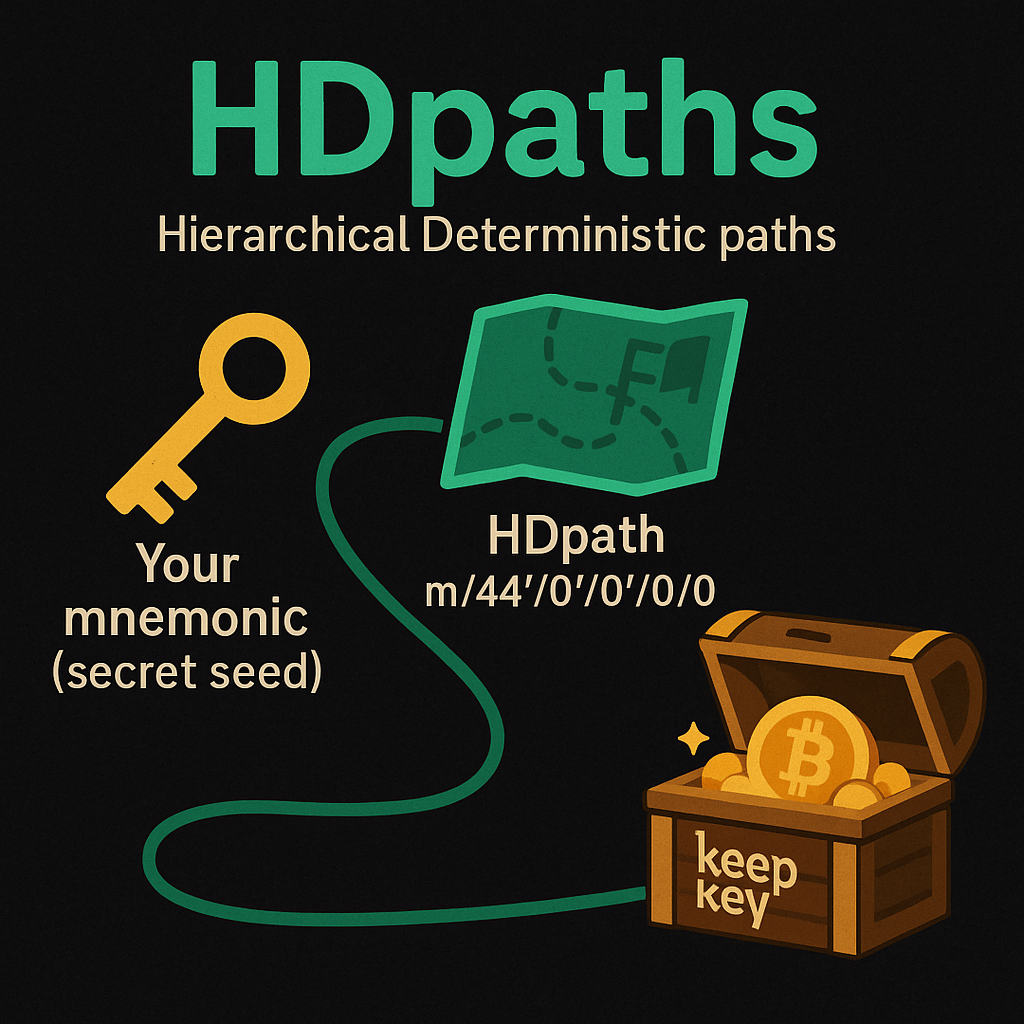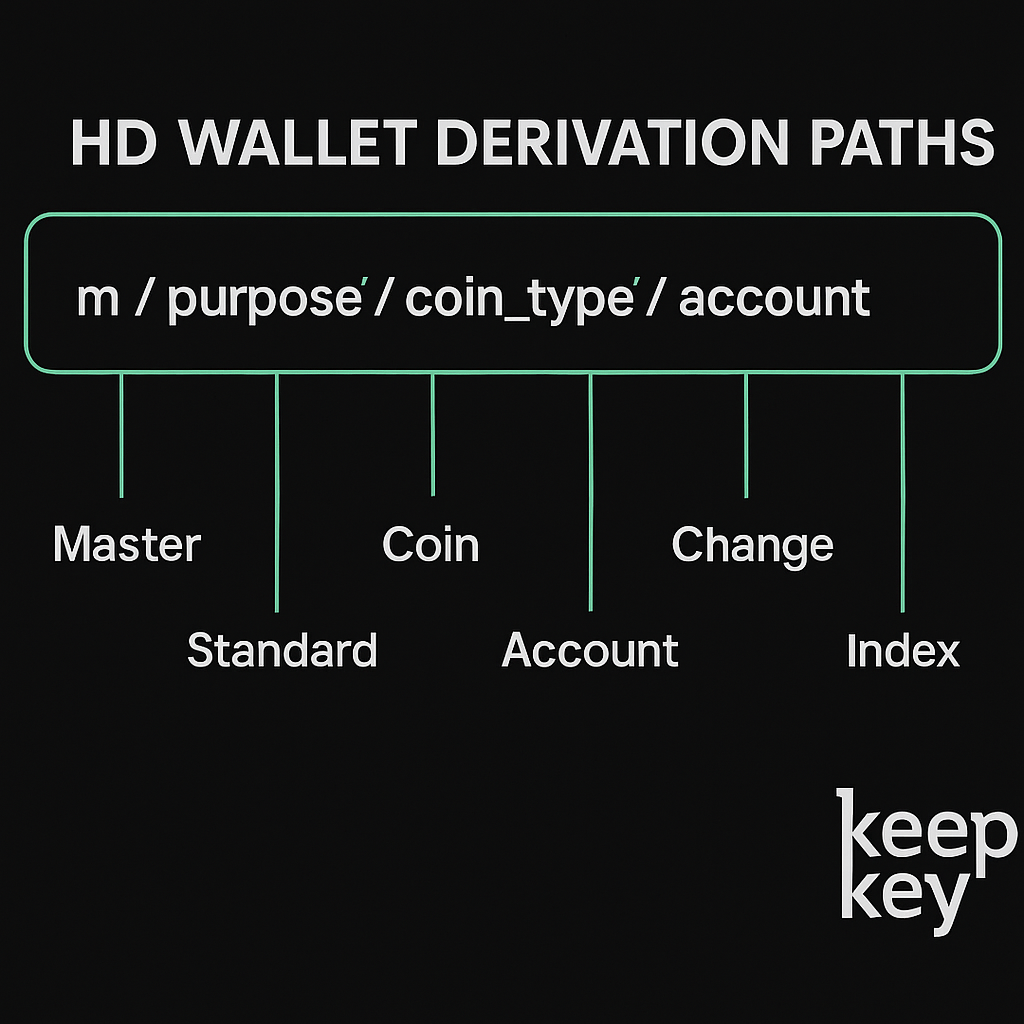
What is a Derivation Path?
Your recovery phrase is the single master key to your whole Bitcoin stash. Load those words into any BIP-32 wallet and it calculates a master private key, then walks an exact route like m/44’/0’/0’/0/0 to generate the private key, public key, and address that hold your coins. The private key never leaves the device; it signs the transaction internally, and the signed data heads to the Bitcoin network to prove you own the funds.
That fixed route can branch endlessly, so one seed can produce unlimited addresses. As long as you protect the phrase, any BIP-32-compatible wallet can rebuild every branch and restore your balances even if your original device disappears. Lose the phrase—or the specific paths you’ve used—and the coins are lost for good, so store the words offline and test your backup.

Standard Format
Derivation paths follow this structure:
m / purpose' / coin_type' / account' / change / address_indexWhere:
- m: The master key
- purpose: The standard being used (e.g., 44’ for BIP44, 49’ for BIP49, 84’ for BIP84)
- coin_type: The cryptocurrency (e.g., 0’ for Bitcoin, 60’ for Ethereum)
- account: The account number (starting from 0’)
- change: 0 for receiving addresses, 1 for change addresses
- address_index: The index of the address (starting from 0)
The apostrophe (’) indicates “hardened” derivation, which adds security by preventing parent private keys from being compromised if a child key is exposed.
Why Derivation Paths Matter
- Multiple Accounts: You can have multiple accounts for the same cryptocurrency from a single seed phrase
- Cross-Wallet Compatibility: Standard paths ensure your funds are accessible across different wallet software
- Address Types: Different path standards (BIP44, BIP49, BIP84) generate different address types (Legacy, SegWit, Native SegWit)